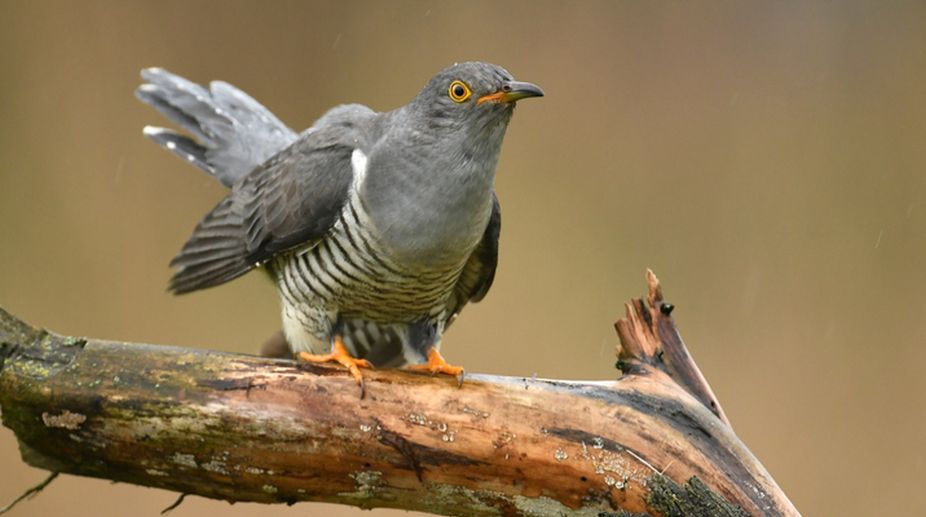Nature does it again
There is a crush-resistant insect, which may have lessons for the engineer

Common cuckoo (Photo: Getty Images)
Deception is essential to survival in the wild. On one hand, all animals fall into the category of predators or prey. It is hence in the interest of each one either to be concealed or to appear to be harmless, if a predator or unappetising or dangerous, if prey. On the other hand, animals and plants often depend on other animals for transport, fertilisation, shelter or nourishment. They hence need to provide services in return, or better, to look like a species that provides the service.
Jenny E York and Nicholas B Davies, from the department of zoology, University of Cambridge, writing in the journal, Nature Ecology and Evolution, describe an instance of a bird that simulates the predator of a sister species, to throw the sister species off her guard while the bird makes use of the sister bird’s nest.
Advertisement
A well-documented instance of deception, or Batesian mimicry, is where species have evolved to look like other species, for protection.
Advertisement
Caterpillars of the Heliconid butterflies of the Amazon feed on toxic leaves of the Passion Flower plant. This makes the butterflies toxic too, which is their principal protection against predators. Batesian mimics are other species of quite edible butterflies, which have evolved to look like the Heliconid, to deceive predators!
Similar deception is practiced by species of harmless snakes, to look like an unrelated, but venomous snake, to keep enemies at bay. A recent publication is about a species of spider, which is in danger of being picked up by a brace of small predators.
While there is no convenient model with the necessary protection, which the spider could hope to look like, the spider has evolved to mimic the dynamic actions of a species of ants, which do have defences of strong jaws and a poisonous sting. While close up resemblance at the physical dimensions of spiders and ants is not detailed, similarity of movements is more likely to cause deception.
The jumping spider, which uses stealth and rapid jumps to capture prey, hence, imitates the movements of the ant, to be mistaken for one and be left alone by predators on the lookout for spiders. In the plant kingdom, too, flowers evolve to look and smell like others, to attract pollinators. Orchids are known to mimic the colours and scents of nectar bearing flowers and even to exude the scent of female insects, to lure males to the flowers in search of a mate!
Slightly apart, weeds that look like crop plants are more likely to survive.
The case of the female cuckoo, however, is different. She too relies on deception, but not to avoid predators, or even to attract helpers or sources of food. The Cuckoo mother uses deception to throw another bird off the track while the cuckoo commits trespass and passes off her own eggs as those of the unsuspecting other.
The common cuckoo, Cuculus canorus, is a “brood parasite”. This means she does not lay and warm her eggs in her own nest, but lays the eggs in the nest of a host bird. The host then raises the cuckoo chicks in addition to her own. As cuckoo chicks hatch early and have marked begging behaviour, they often monopolise the nest resources, to the cost of the host bird’s chicks. While the cuckoo generally lays eggs in the host nest swiftly and with stealth, there are instances of the male cuckoo positively diverting the hosts from their nest.
The cuckoo often removes one or more of the host bird’s eggs while laying her own in the nest. The hosts also sometimes remove cuckoo eggs if they are able to make them out. And then, there are also instances of the cuckoo acting to destroy the host birds’ eggs if the latter should throw out the cuckoo eggs. Raising the cuckoo chicks in addition to their own is then a lesser price for hosts to pay than trying to keep the cuckoo eggs out. For all this, the cuckoo cannot just march up to a host bird’s nest and lay her eggs there.
The host birds would also attack and “mob” cuckoos found in the vicinity of their nests. The cuckoo has hence, perforce, to be secretive and use stealth to plant her eggs in hosts’ nests. Given the need for stealth, however, it is surprising that soon after she lays the eggs in the host’s nest, the female cuckoo often breaks out into a “chuckle” call, which should draw attention to herself! This is the feature of the female cuckoo’s behaviour that York and Davies from Cambridge made their subject of study. The duo notes that the female cuckoo’s call is not just a “chuckle” but is “hawk-like”.
The chuckle is thus calculated to put the host birds on the alert, to watch out for the serious peril of a hawk, and ignore trifles like a female cuckoo messing about with the nest! “Prey are sensitive to even subtle cues of predation risk, which provides the evolutionary potential for parasites to exploit host risk perception.
In our field experiments, reed warbler (Acrocephalus scirpaceus) hosts paid no more attention to the ‘cuckoo’ call of the male common cuckoo than the call of a harmless dove. However, the chuckle call of the female cuckoo had the same effect as the call of a predatory hawk in distracting the warblers’ attention and reducing rejection of a foreign egg.
Our results show that the female cuckoo enhances her success by manipulating a fundamental trade-off in host defences between clutch and self protection,” the authors say in the papero.
(The writer can be contacted at response@simplescience.in)
Advertisement